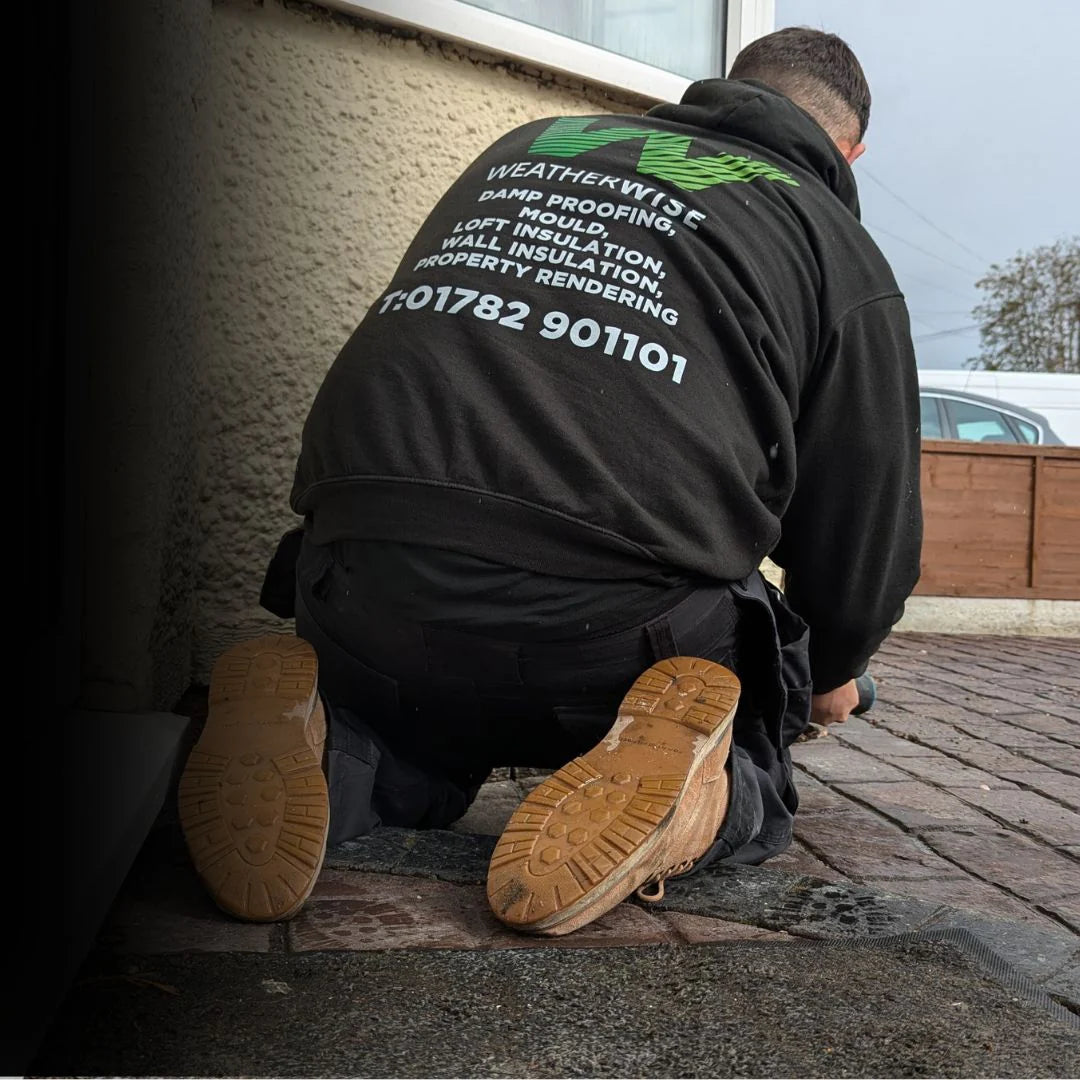🌧️ Dealing with High Ground Level Damp in Shrewsbury Homes
In many older Shrewsbury properties, the external ground level sits higher than the internal floor. This often leads to damp patches on lower walls, even if the property has a damp proof course in place.
At Weather Wise, we regularly help homeowners decide whether to fix this from the inside — with tanking — or from the outside — by lowering the ground.
So, which is right for your home?
🧱 What Is High Ground Level Damp?
High ground level damp occurs when:
-
Soil, patios, driveways, or raised beds sit above or close to the DPC
-
Rainwater runs towards the wall instead of away from it
-
Moisture saturates the external wall and seeps laterally into the property
-
There’s no cavity, or it’s bridged by debris or insulation
This is very common in Georgian, Victorian, and early 20th-century homes in areas like Belle Vue, Coleham and Kingsland.
⚖️ Tanking vs Lowering Ground – What’s the Difference?
| Option | What It Involves | Best When... |
|---|---|---|
| Internal Tanking | Applying a waterproof slurry (e.g. Mapelastic 2KR or Remmers 2K) to inside walls, then re-plastering with breathable materials | External changes aren’t possible (e.g. shared walls, limited access) |
| Lowering External Ground | Excavating soil or hardstanding, installing P-gravel drains, French drains, or ACOs, then sealing walls below DPC | You can create space to lower levels below the DPC and improve wall drainage |
🔍 How We Decide the Best Approach
At Weather Wise, we inspect:
-
The height of the current ground level relative to the DPC
-
Whether the property has a solid wall or cavity
-
Drainage options and water runoff direction
-
If there are neighbouring properties or shared access
-
Existing signs of salt contamination or render bridging
We often recommend both options in tandem, depending on which elevations are most exposed.
✅ Our Damp Solutions for Shrewsbury Homes May Include:
-
P-gravel perimeter drain installation
-
Removal of raised paths, flowerbeds, or render bridging
-
Internal wall tanking using breathable systems
-
Lime plaster reinstatement or salt-inhibiting render
-
French drain or ACO installation for long-term protection
-
Waterproof coatings for exposed solid walls
We always prioritise breathable finishes that allow moisture to escape without trapping it inside the wall.
🛑 What NOT to Do
-
Don’t re-plaster with gypsum over damp or tanked walls
-
Don’t rely on surface paints or damp sealant as a fix
-
Don’t raise external ground without re-checking the DPC
-
Don’t ignore signs of condensation — internal moisture often worsens lateral damp
👷♂️ Why Shrewsbury Homeowners Trust Weather Wise
-
✅ We assess both internal and external causes
-
✅ Full property moisture diagnostics and salt testing
-
✅ Trained in BS 5250 and lateral damp prevention
-
✅ Members of the Damp Proofing Association
-
✅ Backed by the Federation of Damp
📞 Book Your Free Damp Assessment in Shrewsbury
https://weatherwiseuk.co.uk/pages/contact
FAQs
Can I lower the ground myself?
Only if you know the required clearance below the DPC and how to install drainage. We recommend a professional plan.
What if I can’t touch the outside wall?
In that case, internal tanking with breathable plastering is usually the safest route.
Is tanking a long-term solution?
Yes — but only if the internal plastering is breathable and the moisture source is stable.



